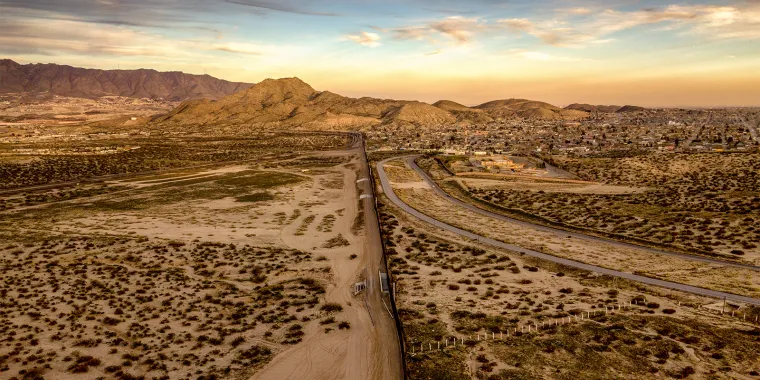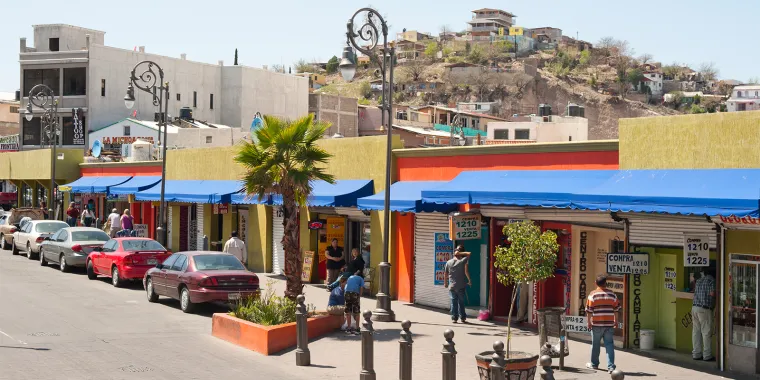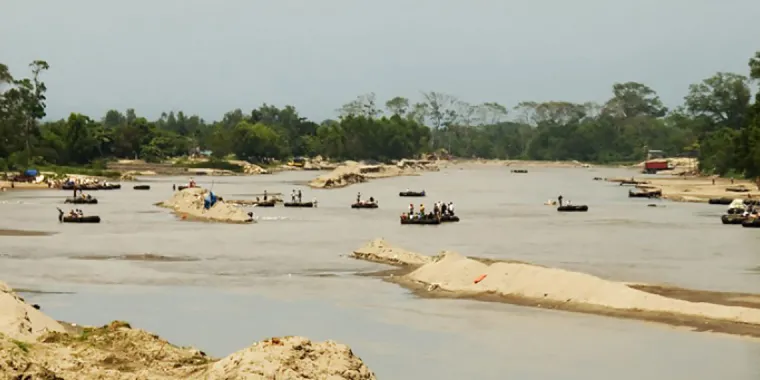Members of a research team at the University of Arizona are using a novel way to investigate the driving forces behind Central America emigration through Mexico and into the United States: natural language processing and machine learning.
Assistant professor Javier Osorio and Professor Alex Braithwaite in the University of Arizona School of Government and Public Policy in the College of Social and Behavioral Sciences are the principal investigators of a $660,000, three-year grant from the U.S. Department of Defense to examine why people risk leaving their homes and communities to make the dangerous trip through Mexico to the United States.
Much of the current research on Central America migration patterns to the United States is focused on the apprehension at the U.S.-Mexico border. Instead, the researchers will focus on the country of origin: what are some of the motivators and stressors in the home country that lead to the decision to emigrate, or in many cases, flee?
"Given that the convergence of deteriorating security conditions, economic crisis and climate change is likely to increase migration flows in Latin America over the next three decades, few questions are more deserving of attention and empirical investigation," said Osorio.
The team will use natural language processing and machine learning to analyze more than 14 million anonymized records of migrant apprehensions in the U.S. and Mexico between 2000 and 2019, records that Osorio noted have hardly been analyzed for this type of information.
By analyzing the testimony of migrants at the border, researchers will be able to disentangle the motivating factors, for men, women, and unaccompanied minors, for leaving home on a journey that is risky and often life-threatening.
"We can learn about the conditions that forced people to migrate, because these are part of the conversations that they have with immigration officers, especially when they seek asylum," said Osorio.
Some of the many complex factors that affect someone’s choice to emigrate are gang violence, political crises in the home country, poverty–which has been worsened by COVID-19–and the desire to access the economic opportunities in the United States.
Machine learning of transcribed and coded Spanish-language newspapers will enable the team to track gang violence and political instability in Central America, and geographic information systems (GIS), a computer system for storing, analyzing and displaying data related to positions on Earth’s surface, will allow them to gather data on natural phenomena, like drought, earthquakes, or hurricanes, to track environmental stressors that affect migration flow from Central America.
For example, in November 2020, Hurricane Eta forced many Central Americans to leave their homes. Mudslides buried whole communities, displacing over 120,000 Central Americans.
In addition to natural disasters, the devastating effects of climate change are impacting migration patterns. In 2018, the United Nations General Assembly affirmed in the Global Compact on Refugees that “climate, environmental degradation and disasters increasingly interact with the drivers of refugee movements.”
According to the United Nations Refugee Agency, there are more than 20 million people each year who leave their homes because of the disastrous effects of global warming.
In Central America, rising temperatures are causing both drought and increased rainfall, both of which can destroy crops, the source of livelihood for many in the area. This can exacerbate poverty and drive people to flee their homes and communities.
In addition to examining stressors in the origin countries, the researchers will track the routes that migrants follow from Central America and through Mexico, looking at the financial costs and the factors that might offset those costs, like social networks or religious organizations. They will also look at how migration patterns interact with immigrations laws in the destination countries, and how the migrants navigate those policies.
Osorio and Braithwaite’s research has the practical benefit of providing information to humanitarian aid and nonprofit groups to help for disaster preparedness. With this type of information, relief groups will know where, for example, to deploy emergency teams to help with family reunification, the allocation of food, and the provision of shelter.
Ultimately, the team wants to “include the richness of individual stories and the representativeness and generalizability of large amounts of data," Braithwaite said. "Everybody benefits from a better understanding of when and why people will migrate.”





